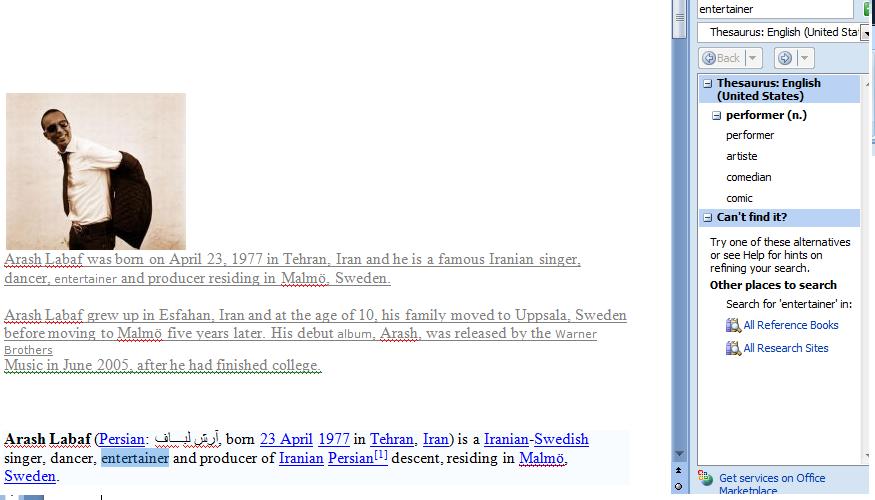During the period 1810-1820, a physician from new York state became very well known through the then very young United States as someone who was attempting to classify english words into categories and in the process create a series of synonyms and antonyms. Thesaurus use dates back to Office 97 and in this version it has changed considerably. It is now an offshoot of Word's first attempt to offer online research help. We would assume that Office 2010, when released, will take this research much further.
Take a look at the Arash document. Arash is a singer whose music your instructor dances to. This information has been taken from the Internet.
Look for the word entertainer and hightlight it. Now move to the review tab and click Thesaurus. You should see something like the following

The thesaurus is tied to the dictionary and the results of performer., etc, are part of what the word dictionary contains. You can continue to "daisy chain" this result by moving your cursor over a result and asking for a further look-up. The system goes to work on this as if this was a word in the document. Not surpringly, you can also insert this result which replaces your highlighted word with this entry
So far, nothing done is functionally different from previous version. But, look above the results and you will see thesaurus within a combo box. Click the combo box and additional sources of reference become available including other languages.
This ties in with the internet research available through Word (the research icon on the review tab) which we will not be covering in this class. To make this work, Microsoft intercepts your request and ties you into a Microsoft owned information engine. No doubt, this is an attempt by Microsoft to go around Google's dominance on the web. Since Microsoft controls Office, it can force users of these programs (assuming they want to stay within the program, to use Microsoft oriented research tools.